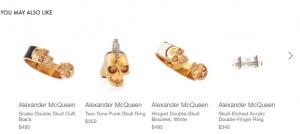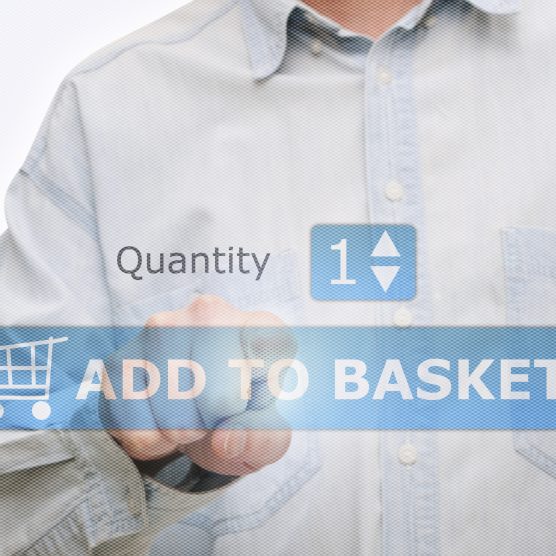Personalization: Making Customers Feel Like a Diamond in the Rough

Everyone loves feeling special.
This is obvious across almost all aspects of life. In the past few years, we’ve seen this concept strongly resonate with one group of people:
Marketers.
In the past three years, the idea of personalizing shopping experiences – both in stores and online – has taken off. Generalized messages and cold, impersonal marketing are in the past. Personalization is an integral part of CRM.
And for companies in the jewelry industry, personalizing is more important than ever. Because of a shift in purchasing power and increase of technology, today’s jewelry retailers must incorporate personalization into their marketing strategies if they want to make a strong impression on potential buyers. With personalization, jewelers can make their customers feel special – like a diamond in the rough. Without personalization, jewelers run the risk of becoming overshadowed by their tech-savvy, relevant competitors.
Why personalize now?
Most industries have already integrated personalization in their marketing strategies. But now, more than ever, is the best moment for leaders in the jewelry industry to start personalizing if they have not already. There are three key reasons that jewelers should be personalizing their marketing.
- Today’s consumers expect marketing personalization. Millennials, the largest purchasing power, require their shopping experiences to have relevant content. According to an article in Entrepreneur, “Millennials want to know a company is paying attention to their specific needs.” The publication also stresses that, when it comes to marketing, “one size does not fit all” – size being a particular product. Companies need to give this powerful consumer group what they want; otherwise, shoppers will take their business elsewhere.
- Everyone else is doing it. With nearly every industry catering to a specific customer’s needs, companies lacking the ability to personalize will stand out in the worst way possible. Companies with generalized marketing content do not resonate with consumers the same way that personalized marketing can. Personalization has the ability to speed up the purchasing process by providing relevant content and customer recognition. Think about it – if two jewelers offer similar products in quality and price, a consumer is more likely to purchase through the retailer that provides relevant content via personalization.
- Jewelry sales need as much help as they can get, as consumers allocate their expenditures elsewhere. While diamonds and pearls used to be the sole representations of status and wealth, today’s consumers are using other types of products to make a statement. It’s no coincidence that jewelry sales have decreased while technology sales increase (think: smartphones, Apple Watches, et all). Jewelry is traditionally gifted to loved ones; however, today’s consumers now give the latest tech to their loved ones. While personalization may not stop consumers from purchasing products in other industries, it can still seriously improve a jeweler’s ROI. Aberdeen reports that personalized emails improve clickthrough rates by 14% and conversion rates by 10%, and 40% of consumers buy more from retailers that personalize a shopping experience across channels. Implementing personalization cannot prevent customers from buying new technology; however, it can attract more attention to the company and its products.
Personalizing in the Jewelry Industry
There are several ways retailers should implement personalization into their marketing. The following must-have features can make a customer feel like a company genuinely cares about their needs. And, when a customer feels this way, their loyalty to the brand increases.
-

High-end retailer Neiman Marcus offers shoppers a variety of recommended products to browse. Relevant recommendations: One of the easiest ways to woo and win customers is to provide relevant recommendations. Janrain & Harris Interactive found that 74% of online consumers get frustrated when websites offer content that has nothing to do with their interests. In the digital sphere, marketers can use algorithms based off past purchases and clicks to determine what a customer may be interested in. A display of the potential buys can be displayed via email or on a website. When executed correctly, these recommended products show the customer you can cater to their specific tastes.
-

Nordstrom sends shopping cart abandonment emails to redirect traffic back to its site. Shopping cart abandonment: With the ability to browse several ecommerce sites at once, it can be easy for customers to get distracted and forget about items in their shopping cart. According to Business Insider, approximately $4 trillion in merchandise will be abandoned in online shopping carts this year. Shopping cart abandonment emails can be the reminder or the final push a consumer needs to make a purchase.
- Digital salespeople: Jewelry can be a tricky sell over the Internet. Sizing and fit is always a challenge when shopping online, and returns can be a hassle. To avoid losing customers across digital entities, companies can consider employing digital “salespeople” that can answer customer inquiries. These salespeople – or, rather, robots – have systematically generated responses to commonly asked questions from shoppers. Accessibility and transparency is important in any company, and digital platforms are no exception.
- Seamless omnichannel: Retailers cannot personalize across one channel and completely ignore another. Synching customer profiles across all channels creates an ideal, omnichannel shopping experience. Consistency is integral to creating a convenient shopping experience. For example, if a customer starts shopping online and hopes to continue browsing while on the go via mobile device, a retailer should make this transition as easy as possible. Consider the format of retailer Revolve, which stores and synchronizes a customer’s favorites online and on mobile app.
Intrigued by the powers of personalization? Learn about NectarOM’s omnichannel personalization, or why we call personalization a long term investment.







